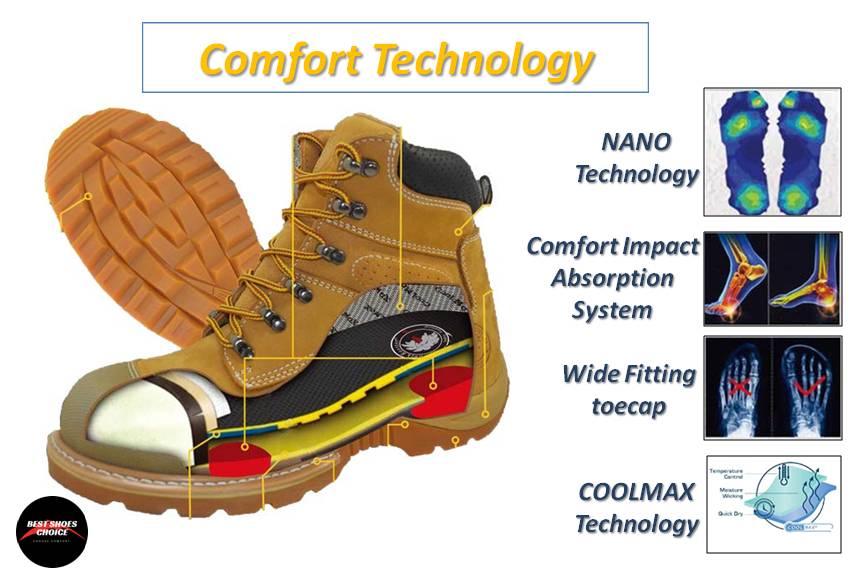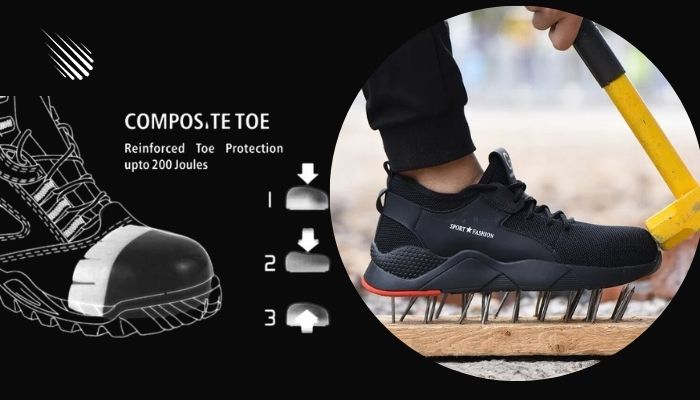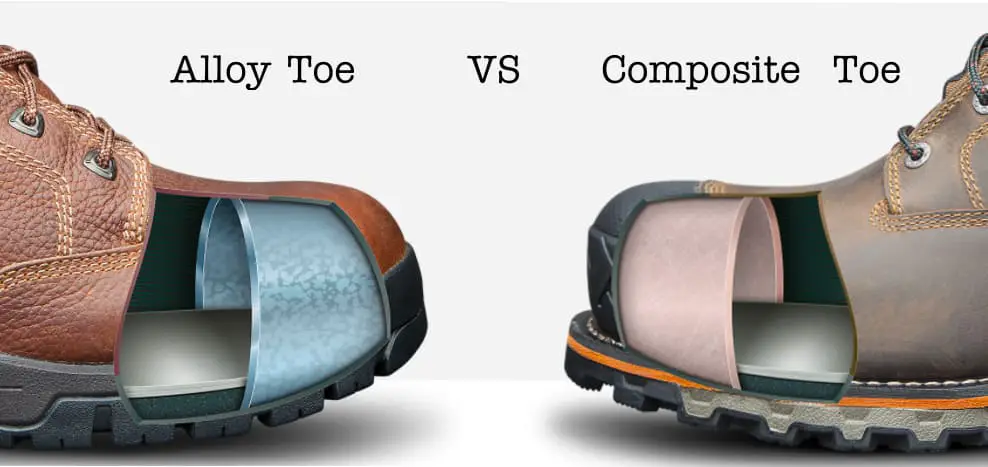Unraveling the Mystery of Composite Toe Technology
What Makes Composite Toe Shoes So Special?
Composite toe technology has been gaining popularity in the footwear industry, offering a unique blend of safety, comfort, and durability. But what sets it apart from traditional steel toe caps? For starters, composite toe technology provides superior protection without the added weight and stiffness of steel toe caps. This is particularly important for workers who require safety footwear for extended periods, as it can significantly reduce fatigue and discomfort. The growing demand for composite toe shoes can be attributed to their ability to provide a high level of protection while also being more comfortable and breathable than traditional steel toe caps. So, what is composite toe made out of? The answer lies in the innovative use of materials, which will be explored in more detail later. For now, it’s essential to understand that composite toe technology is revolutionizing the safety footwear industry, offering a range of benefits that make it an attractive option for workers across various industries.
The Anatomy of a Composite Toe
Delving into the composition of a composite toe reveals a complex blend of materials, carefully selected and combined to create a strong and lightweight toe cap. At the heart of composite toe technology lies the innovative use of materials such as carbon fiber, Kevlar, and fiberglass. These materials are chosen for their unique properties, including high strength-to-weight ratios, resistance to impact and compression, and ability to absorb energy. By combining these materials in a specific way, manufacturers can create a toe cap that is both durable and comfortable. For instance, carbon fiber provides exceptional strength and stiffness, while Kevlar adds a layer of protection against penetration and abrasion. Fiberglass, on the other hand, helps to absorb impact and distribute force evenly across the toe cap. The precise combination and arrangement of these materials can vary depending on the manufacturer and the specific application, but the end result is a toe cap that is both strong and lightweight. So, what is composite toe made out of? The answer lies in the careful selection and combination of these advanced materials, which work together to provide unparalleled protection and comfort.
How to Choose the Right Composite Toe Shoes for Your Needs
Selecting the right composite toe shoes can be a daunting task, especially with the numerous options available in the market. However, by considering a few key factors, individuals can make an informed decision that meets their specific needs and occupation. Firstly, it’s essential to identify the work environment and the potential hazards that exist. For instance, workers in the construction industry may require composite toe shoes with enhanced protection against heavy objects and rough terrain, while those in the manufacturing sector may prioritize shoes with superior slip resistance. Additionally, personal preferences such as style, color, and comfort should also be taken into account. Durability is another critical factor, as composite toe shoes that can withstand the rigors of daily use will provide better value in the long run. Breathability is also an important consideration, as shoes that allow for airflow can help prevent moisture buildup and reduce the risk of foot infections. By weighing these factors, individuals can choose composite toe shoes that provide the perfect blend of safety, comfort, and style. Remember, what is composite toe made out of is just the starting point – the right shoe for the job requires careful consideration of multiple factors.
The Science Behind Composite Toe Protection
The secret to composite toe technology’s exceptional protection lies in the science behind its design and materials. At its core, composite toe technology is based on the principles of materials science and engineering. By combining advanced materials such as carbon fiber, Kevlar, and fiberglass, manufacturers can create a toe cap that is both strong and lightweight. The unique properties of these materials, including their high strength-to-weight ratios and ability to absorb energy, make them ideal for protecting against impact and compression. When a composite toe shoe is subjected to an impact, the materials work together to distribute the force evenly, reducing the risk of injury to the toes. Additionally, the lightweight nature of composite toe technology reduces the overall weight of the shoe, making it more comfortable to wear. This perfect blend of safety and comfort is what sets composite toe technology apart from traditional steel toe caps. So, what is composite toe made out of? The answer lies in the innovative combination of advanced materials and clever design. By understanding the science behind composite toe protection, individuals can appreciate the value and benefits that this technology provides.
Comparing Composite Toe with Other Safety Toe Options
When it comes to safety toe technology, there are several options available, each with its own unique benefits and drawbacks. Composite toe technology is just one of the many safety toe options, and understanding how it compares to others is essential for making an informed decision. Steel toe technology, for instance, is a traditional and widely used option that provides excellent protection against impact and compression. However, it can be heavy and cumbersome, making it less comfortable to wear. Aluminum toe technology, on the other hand, is lighter and more breathable than steel toe, but may not provide the same level of protection. Alloy toe technology, a combination of metals, offers a balance between protection and comfort, but can be more expensive than other options. Composite toe technology, with its unique blend of materials, offers a superior balance of safety, comfort, and durability. So, what is composite toe made out of? The answer lies in its innovative combination of advanced materials, which sets it apart from other safety toe options. By understanding the advantages and disadvantages of each option, individuals can make an informed decision about which safety toe technology is best for their needs.
Debunking Common Myths About Composite Toe Shoes
Despite the growing popularity of composite toe technology, there are still several misconceptions surrounding its durability, cost, and effectiveness. One common myth is that composite toe shoes are not as durable as traditional steel toe caps. However, this couldn’t be further from the truth. Composite toe technology is designed to provide long-lasting protection against impact and compression, making it an excellent choice for individuals who require safety footwear for their occupation. Another myth is that composite toe shoes are too expensive. While it’s true that some composite toe shoes may be more costly than their steel toe counterparts, the benefits they provide in terms of comfort, safety, and durability make them a worthwhile investment. Additionally, many manufacturers are now offering affordable composite toe options, making this technology more accessible to a wider range of consumers. So, what is composite toe made out of? The answer lies in its innovative combination of advanced materials, which provides a superior balance of safety, comfort, and durability. By understanding the facts behind composite toe technology, individuals can make an informed decision about whether this technology is right for them.
The Future of Composite Toe Technology
As the demand for composite toe technology continues to grow, manufacturers are investing in research and development to improve the performance, comfort, and durability of composite toe shoes. One area of focus is the development of new materials and manufacturing techniques that can further reduce the weight and increase the strength of composite toe caps. For example, advancements in 3D printing technology are enabling the creation of complex geometries and structures that can provide enhanced protection and comfort. Additionally, the use of sustainable materials, such as recycled carbon fiber, is becoming increasingly popular, offering a more environmentally friendly option for consumers. Another area of innovation is in the integration of smart technology into composite toe shoes, such as sensors that can detect impact and compression, providing real-time feedback to the wearer. This technology has the potential to revolutionize the safety footwear industry, providing a new level of protection and comfort for workers in hazardous occupations. So, what is composite toe made out of? The answer lies in its innovative combination of advanced materials, which provides a superior balance of safety, comfort, and durability. As composite toe technology continues to evolve, it’s likely that we’ll see even more innovative and effective solutions emerge, further solidifying its position as a leading safety toe option.
Conclusion: The Benefits of Composite Toe Technology
In conclusion, composite toe technology has revolutionized the safety footwear industry by providing a superior balance of safety, comfort, and durability. By understanding what is composite toe made out of, including its innovative combination of advanced materials, individuals can make an informed decision about whether this technology is right for them. Whether you’re a worker in a hazardous occupation or simply looking for a comfortable and safe shoe, composite toe technology has something to offer. With its numerous benefits, including its lightweight and breathable design, composite toe shoes are an excellent choice for anyone seeking a reliable and effective safety solution. As the technology continues to evolve, it’s likely that we’ll see even more innovative and effective solutions emerge, further solidifying its position as a leading safety toe option. By choosing the right composite toe shoes for your needs and occupation, you can ensure a safe and comfortable working experience. Remember, when it comes to safety footwear, composite toe technology is an excellent choice.







